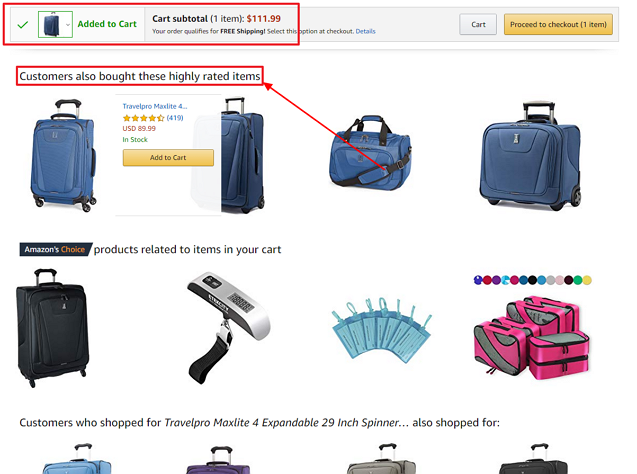In today’s marketing world, personalised marketing has quickly become the gold standard and for good reason —
- 81% of consumers want brands to understand them and know when to approach them (and when not to).
- 87% of consumers say that personally relevant branded content has a positive impact on how they feel about that brand.
- 63% of consumers are highly annoyed by the way brands continue to rely on repeatedly blasting generic ad messages.
The stats clearly state one thing — personalisation matters.
This means the standard one-size-fits-all content strategy will no longer work. Instead, you need to tailor content and provide real answers to real problems.
And the best way to do this is by implementing buyer personas and crafting content tailored to your target market.
Here’s an example of an excellent buyer persona —

But you already know that! In fact, you probably have a bunch of Sample Sally’s in your arsenal. The real question is —
…are you actually putting them to work or…are they just lying around in your closet?
Contents
Don’t Leave Your Personas in the Closet
As you know, buyer personas are vital for understanding your consumers. After all, it’s a logical place to start, as it’s practically impossible to develop content without it.
But here’s the real kicker — only 44% of marketers actually use them!
The rest either don’t have one or don’t know enough to use them. Nevertheless, 71% of companies that do use buyer personas exceed their revenue and lead targets (I wonder why… 🤔)
So, if you’re reading this and leaving your buyer personas in your closet, it’s time to change and start using them!
To help give you a head start, I’ve shared five techniques to effectively utilise buyer personas in your content marketing strategies.
How to Use Buyer Personas in Content Marketing
Host a Persona Training Workshop

Before you dive into the nitty-gritty and start using personas, you first need to train the people that are going to use it — your content marketers.
An experienced content marketer should be familiar with buyer personas, but it doesn’t hurt to revise. So, arrange a persona training workshop and get those who are using the persona familiar with how to actually use it.
Here are a few topics that should be on the agenda:
- Developing an author tone specific to its persona
- Determining the lingos (read: vocabulary) to be used when developing that content
- Determining the type of content that works best with its persona
- Figuring out the best channels to implement this content
While this process may seem tedious, it will end up making content strategy a reasonably straightforward process in the future. This will ultimately increase marketing efficiency and boost sales!
Pro Tip: Create handouts of this document and pass it on to those concerned.
Revamp Existing Content

Once you’ve gotten your team onboard with your buyer personas, it’s time to sit down and change things up within your existing content.
After creating buyer personas, many companies jump the gun and start producing content right away. Yes new content is important, but revamping old content is just as important. ( Read: Fresh Content).
Now, it can be tedious and quite boring to go through existing content. But if you really think about it — you’ll end up spending significantly less time and start seeing results much faster than developing new content.
So, sit down — audit your existing content and figure out which persona each piece aligns with and then identify the gaps. Try to improve it by optimising its tone, changing the vocabulary and editing ruthlessly. But, if it seems like a lost cause that won’t generate a decent ROI — just get rid of it.
Remember: 80/20
Write Highly Targeted Blog Posts
Blogging is huge! In fact, 53% of content marketers use blogging as their #1 content marketing tool. After all, content is still king and at the forefront of SEO.
However, while blogging is excellent, the competition is intense! So, to stand out — you’ll have to go above and beyond, and create blog posts that are tailored specifically to your target audience. You can tackle specific problems that your persona experiences and eventually take a step further and implement persona-specific sections or channels for your blog.
For example, Flywheel creates content that tackles specific problems related to their target market (freelancers, agencies and creatives) —

If you look at their first article “How to take professional photos for your design portfolio” you’ll see how it tackles a specific problem for a specific persona.
This process is called ‘niching down’ and buyer personas help you determine these key niches and create highly specific content that meets reader intent. This type of content usually gets better engagement and also tends to rank relatively easier as compared to broader niches. (Yay for SEO!).
Pro tip: Use a tool like Answer the Public to find long-tail keywords your persona might have searched for.
Create and Optimise Landing Pages for Personas
Oftentimes, the buyer persona gets forgotten during the hustle and bustle of creating landing pages. After all, there’s just so much that goes into a landing page.
Nevertheless, landing page copy designed without the buyer persona in mind just isn’t as effective!
After all, how do you create an offer to someone without understanding their needs? (Spoiler alert: you can’t!)
So, instead of taking a blind stab — make highly educated guesses and create landing pages that resonate with your target audience.
To understand this further, let’s take a look at Flywheel’s landing pages…
…this is their landing page for agencies:

And this is their landing page for freelancers:

Notice the obvious differences?
Everything from the hero image to CTA is designed completely differently! This is because Flywheel are targeting different personas (freelancers and agencies) with their landing pages. These personas have different problems and require different solutions.
This is why, although Flywheel is the same platform — it uses a different content marketing strategy for agencies and freelancers.
So, the next time you create (or optimise) your landing page, make sure the accompanying copy conveys an offer specific to its persona.
Pro tip: Collect quotes during customer interviews and use them in your landing page copy. This will make your target feel like you’re in their head.
Create Personalised Customer Experiences
Buyer personas give you enough data to create a unique and personalised experience tailored to each persona. This is crucial because personalisation has a massive impact on people’s purchase decisions.
The biggest advocate of personalised customer experience is Amazon —

Amazon makes 35% of its sales using its AI recommended search engine.
This evidently states the importance of suggesting the right item to the right user and at the right time.
This should come as no surprise as 75% of consumers are more likely to buy from retailers that understand their needs and create personalised experiences accordingly.
Today, with solutions like IBM Watson you can grasp the power of AI and put your customer data to work. This means you can now replicate the exact personalisation model of Amazon without spending a ton on resources.
Conclusion
There you have it — five tactics that will help you implement buyer personas in your content marketing strategies.
Remember, the internet in 2019 is the most crowded space on earth and to stand out — you will have to go above and beyond and personalise your brand.
So, take your personas out of the closet and put them to work. Put these five techniques to the test and watch your content drive real results!
Do you use personas? If yes, what technique has worked best for you? Let me know in the comments below.
- About the Author...







One Response
Indeed useful, I’ll definitely try this strategy in my blog posts.